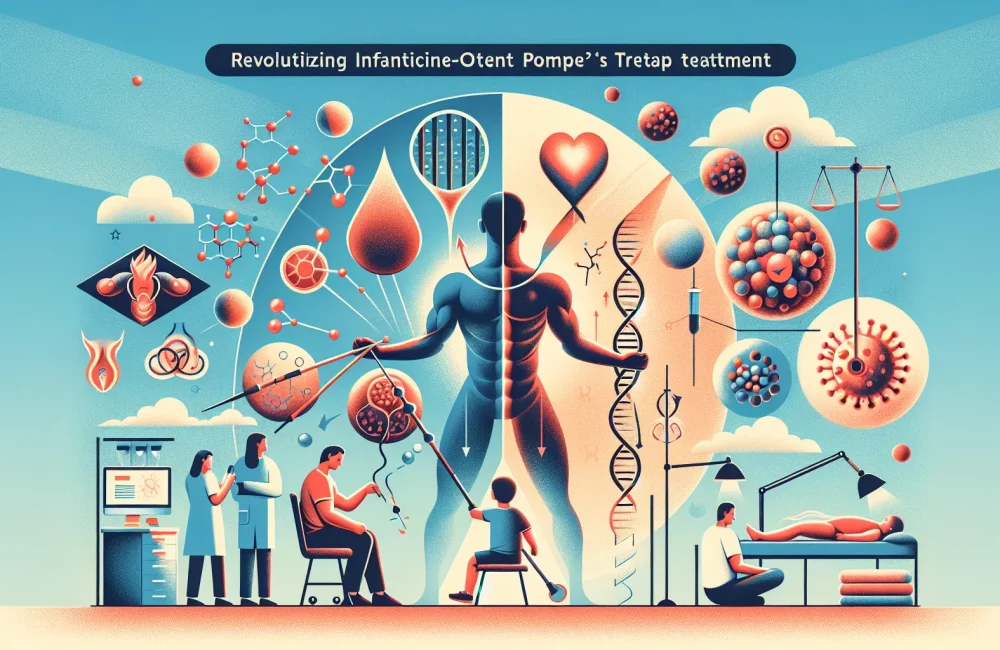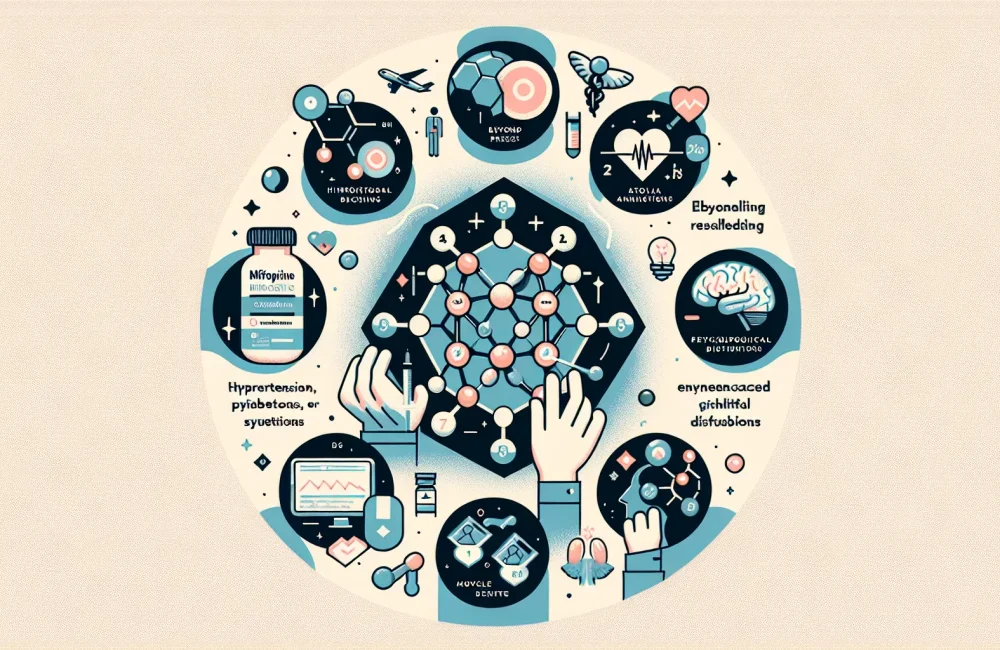By CAFMI AI From New England Journal of Medicine
Breakthroughs in Gene Therapy for Pompe’s Disease
Infantile-onset Pompe’s disease (IOPD) is a severe genetic disorder that results in a deficiency of acid alpha-glucosidase (GAA), an enzyme critical for breaking down glycogen in the body. This enzyme deficiency leads to progressive muscle weakness and life-threatening cardiomyopathy in affected infants. Traditionally, enzyme replacement therapy (ERT) has been the mainstay treatment, significantly improving patient outcomes by supplying the missing enzyme. However, ERT has notable limitations for clinicians to consider: patients often develop antibody responses against the administered enzyme, reducing treatment efficacy; the therapy struggles with incomplete tissue targeting, especially in skeletal muscles and the heart; and lifelong, repeated intravenous infusions are required, impacting quality of life and increasing healthcare burdens. These limitations underscore the urgent need for more effective, long-lasting solutions. Recent developments in gene therapy, particularly the use of adeno-associated virus (AAV)-mediated gene transfer, offer a transformative approach. Clinical trials employing systemic delivery of functional GAA genes via liver-directed AAV vectors have demonstrated promising improvements in cardiac and skeletal muscle function, reduced glycogen accumulation, and extended survival in infants with IOPD. For healthcare professionals in the U.S., these findings signify a hopeful shift from chronic management to potential lifelong correction with a one-time treatment. The liver-directed approach not only delivers the therapeutic gene efficiently but also induces immune tolerance to GAA, addressing a major hurdle seen with ERT antibody formation. These advances mark a pivotal step forward in managing this devastating disease.
Clinical Implications and Challenges of Gene Therapy
From a clinical standpoint, gene therapy for IOPD offers several promising benefits but also introduces new considerations for patient care pathways. The gene transfer technique using AAV vectors has shown favorable safety profiles in early trials, with manageable side effects and no severe adverse events reported. The ability of liver-directed vectors to generate immune tolerance diminishes the risk of harmful antibody responses, potentially enhancing long-term treatment durability and efficacy. Moreover, ongoing research into vector designs targeting skeletal muscle and central nervous system tissues aims to fill existing gaps in therapy, possibly addressing manifestations beyond muscle weakness and cardiomyopathy, such as respiratory involvement and neurological symptoms. This expanded targeting could improve comprehensive disease control. However, clinical implementation faces challenges including determining optimal vector dosing to balance therapeutic effects with safety, ensuring scalable manufacturing processes to meet patient needs, and establishing ethical guidelines for pediatric gene therapy application. Clinicians must also navigate multidisciplinary care coordination involving genetic counseling, immunological monitoring, and cardiac and respiratory function assessment. Tailored protocols for patient selection and post-treatment follow-up are crucial to maximize benefits while minimizing risks. Additionally, counseling must address realistic expectations regarding outcomes and long-term monitoring requirements. Integrating gene therapy into primary-care workflows will necessitate training and awareness to recognize candidates early and facilitate timely referral to specialized centers.
Future Directions and Practice Integration
Looking ahead, gene therapy for IOPD is poised to reshape standard of care significantly. Long-term data collection from ongoing and future studies will clarify durability of gene expression and survival benefits, informing guideline updates and reimbursement decisions. As evidence accumulates, adaptation of clinical practice guidelines will guide diagnostic protocols to incorporate genetic testing and biomarker use more systematically, enabling earlier diagnosis and intervention. Differential diagnosis with other neuromuscular disorders and metabolic diseases remains essential to ensure appropriate patient identification. Red flags such as early-onset hypotonia, hypertrophic cardiomyopathy, and respiratory distress in infants should prompt immediate evaluation. Counseling discussions must encompass inheritance patterns, treatment options including ERT and gene therapy, and potential risks and benefits, supporting informed family decisions. Follow-up care will likely evolve into long-term multidisciplinary surveillance incorporating cardiac, respiratory, immunologic, and developmental assessments to detect late complications or emerging symptoms. Primary care providers play an important role in initial suspicion, referral, and ongoing holistic patient support. Overall, gene therapy introduces a new paradigm where the focus shifts from managing progressive symptoms to achieving functional correction, offering hope for improved quality of life and survival in infants facing this devastating illness. The ongoing collaboration between researchers, clinicians, and families will be vital to harness the full potential of these novel treatments.
Read The Original Publication Here






